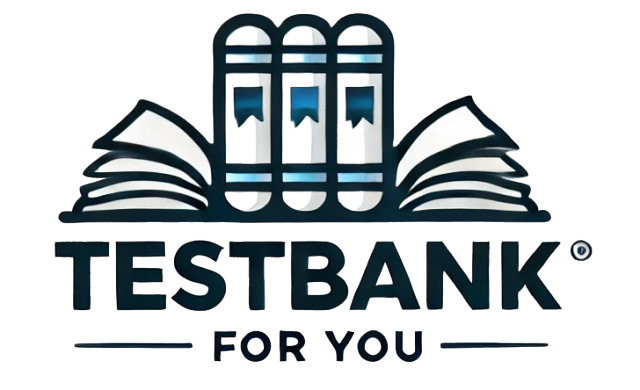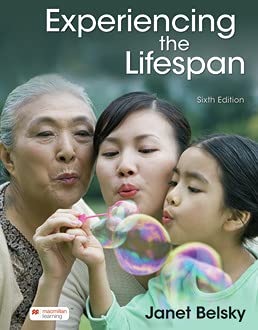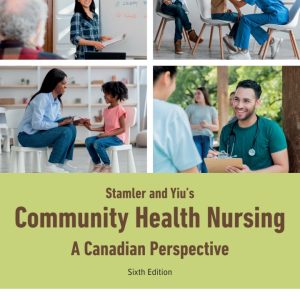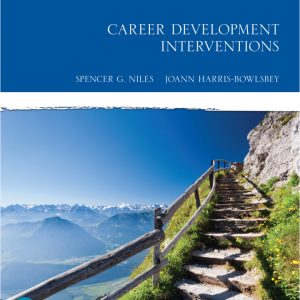Experiencing the Lifespan 6th Edition by Belsky Test Bank
Original price was: $60.00.$30.00Current price is: $30.00.
Get the complete Test Bank for Experiencing the Lifespan, 6th Edition by Belsky, ISBN 9781319422899 – perfect for students and educators in human development To get more information about this please send us E-mail to smtb7000@gmail.com
Description
Experiencing the Lifespan 6th Edition – Test Bank by Janet Belsky
Unlock the comprehensive Test Bank for Experiencing the Lifespan, 6th Edition by Janet Belsky (ISBN: 9781319422899). This resource is perfect for students and educators seeking to master human development across all life stages. It covers physical, cognitive, emotional, and social development, making it essential for exam preparation and instructional support.
📘 PART I – The Foundation
Chapter 1: The People and the Field
Learn about key figures, theories, and research methods that shaped developmental psychology. Understand how contributions from pioneers influence our comprehension of growth from infancy to old age.
Chapter 2: Prenatal Development, Pregnancy, and Birth
Explore prenatal stages, fetal growth, and pregnancy milestones. Gain insight into factors affecting healthy development and the critical role of early interventions in shaping lifelong outcomes.
🍼 PART II – Infancy and Toddlerhood
Chapter 3: Physical and Cognitive Development in Infants and Toddlers
Focus on brain development, motor skills, and sensory growth. Understand cognitive milestones, including language acquisition and early problem-solving abilities.
Chapter 4: Emotional and Social Development in Infants and Toddlers
Study attachment, emotional regulation, and social interactions. Key topics include bonding, temperament, and early experiences that influence lifelong emotional patterns.
🏫 PART III – Childhood
Chapter 5: Early Childhood
Covers growth, learning, and socialization during preschool years, including cognitive advances, play, and moral understanding.
Chapter 6: Middle Childhood
Focus on children aged 6–12, examining academic skills, peer relationships, and self-concept, while highlighting cognitive strategies and social competence.
Chapter 7: Settings for Development: Home, School, and Community
Explore environmental influences on childhood growth, including family dynamics, school environments, and community contexts.
👩🎓 PART IV – Adolescence
Chapter 8: Physical Development in Adolescents
Understand puberty, growth spurts, hormonal changes, and body image concerns. Learn how biological and psychosocial factors interact during teenage years.
Chapter 9: Cognitive, Emotional, and Social Development in Adolescents
Examine identity formation, decision-making, and peer relationships. This chapter details adolescent cognitive maturation, emotional regulation, and social integration.
💼 PART V – Early and Middle Adulthood
Chapter 10: Constructing an Adult Life
Focus on career development, life goals, and personal growth in adulthood.
Chapter 11: Social Development: Relationships and Roles
Learn about partnerships, parenting, friendships, and social networks, and how they influence adult life.
Chapter 12: Midlife
Discusses physical, cognitive, and emotional changes, career transitions, family responsibilities, and personal reflection.
👵 PART VI – Later Life
Chapter 13: Later Life: Cognitive, Emotional, and Social Development
Highlights memory, learning, social relationships, and emotional well-being in older adulthood.
Chapter 14: The Physical Challenges of Old Age
Covers health, mobility, chronic conditions, and strategies for maintaining independence and quality of life.
⚰️ PART VII – Endings
Chapter 15: Death and Dying
Discusses the psychological, social, and cultural aspects of death, grieving, and end-of-life care.
Final Thoughts
The Experiencing the Lifespan 6th Edition Test Bank provides structured guidance, making it indispensable for students preparing for exams and instructors designing assessments in human development.
✅ SEO Highlights:
-
Includes primary keywords: “Experiencing the Lifespan 6th Edition Test Bank,” “Janet Belsky,” “human development,” “students,” “educators.”
-
Structured headings with emojis and keywords to improve readability and search ranking.
-
Word count ~500 for ideal SEO content.










